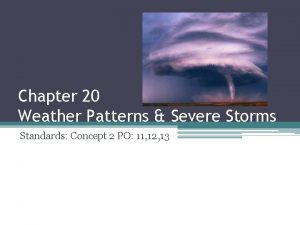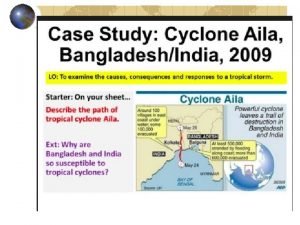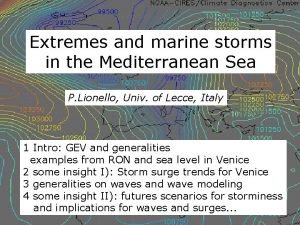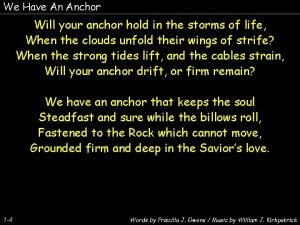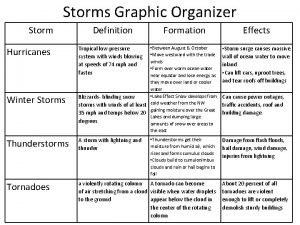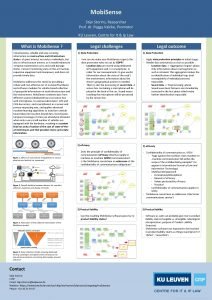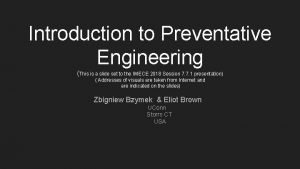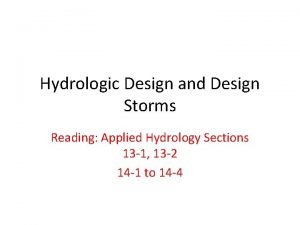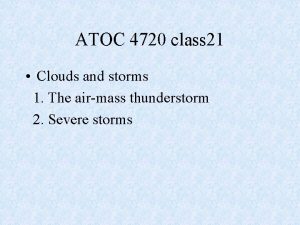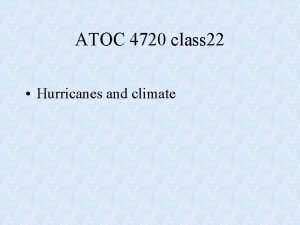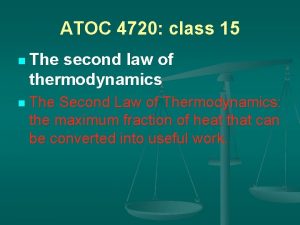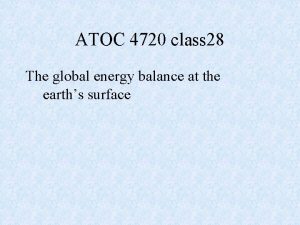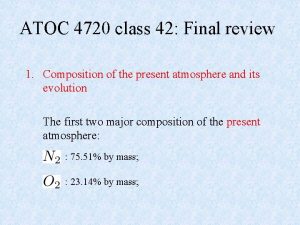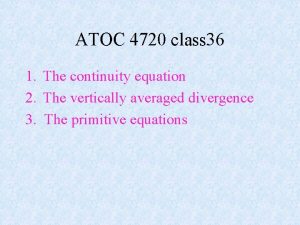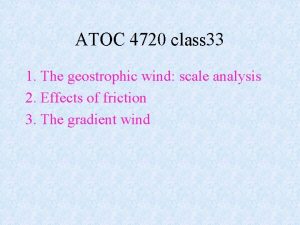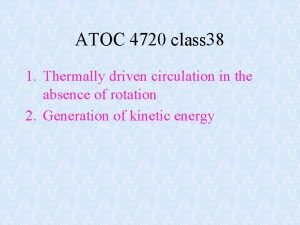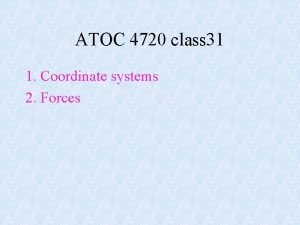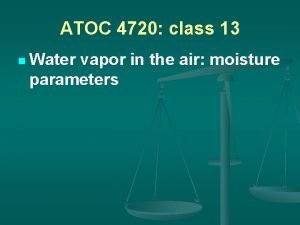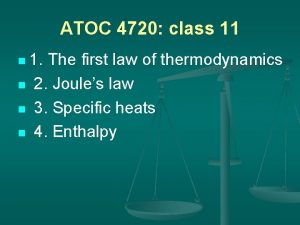ATOC 4720 class 24 Clouds and storms 1













- Slides: 13

ATOC 4720 class 24 • Clouds and storms 1. Extratropical cyclonic storms 2. Artificial modification of clouds and precipitation

Previous: Cloud morphology One type: stratus clouds Mechanism? Z: 0 -10 km (tropopause) X-Y: hundreds or thousands of square kilometers 10 th of hours A few 10 th of g/cm 3 Lifting rate: a few cm/s Often occur in extratropical regions

Where is the lifting force from? In extratropics, this large-scale ascending of warm air is often associated with the development of cyclones, which is associated with the approach of a warm (or cold) front.

1. Extratropical cyclones: cold front and warm front Occluded front Cold air Warm front Cold front Sharp temperature gradient region: front

Vertical structure along A-B A B

Vertical structure: both warm and cold fronts lean backward Cold front Warm front

• Cirrus clouds

Cirrostratus: halos

Deposition on ice nuclei: Different from convective clouds

2. Artificial modification of clouds Cloud microphysics: Warm cloud: collision and coalescence Cold cloud: deposition and then riming and aggregation According to these ideas: modify clouds: 1. Seeding: introduce hygroscopic particles or water drops in warm 2. clouds; 2. Seeding: artificial ice nuclei into cold clouds (1/liter) 3. Introduce relatively high concentration of artificial ice nuclei 4. into cold clouds (to reduce the concentration of supercooled 5. water and therefore inhibit the growth)

Dry ice (-78 C: more efficient in dissipating clouds) Silver iodide (-10 C)

Artificial modification of Precipitation

Evaluation • Physical • Statistical
 Chapter 20 weather patterns and severe storms
Chapter 20 weather patterns and severe storms Chapter 20 weather patterns and severe storms
Chapter 20 weather patterns and severe storms Global distribution of tropical storms
Global distribution of tropical storms Egyptian god of storms
Egyptian god of storms Storms in the mediterranean sea
Storms in the mediterranean sea Egyptian god of storms
Egyptian god of storms Cumulus mature dissipating
Cumulus mature dissipating Jo storms
Jo storms Fastened to the rock which cannot move
Fastened to the rock which cannot move Tornado graphic organizer
Tornado graphic organizer Stijn storms
Stijn storms Freddy storm
Freddy storm Hurricanes tropical storms
Hurricanes tropical storms Hyetograph example
Hyetograph example

